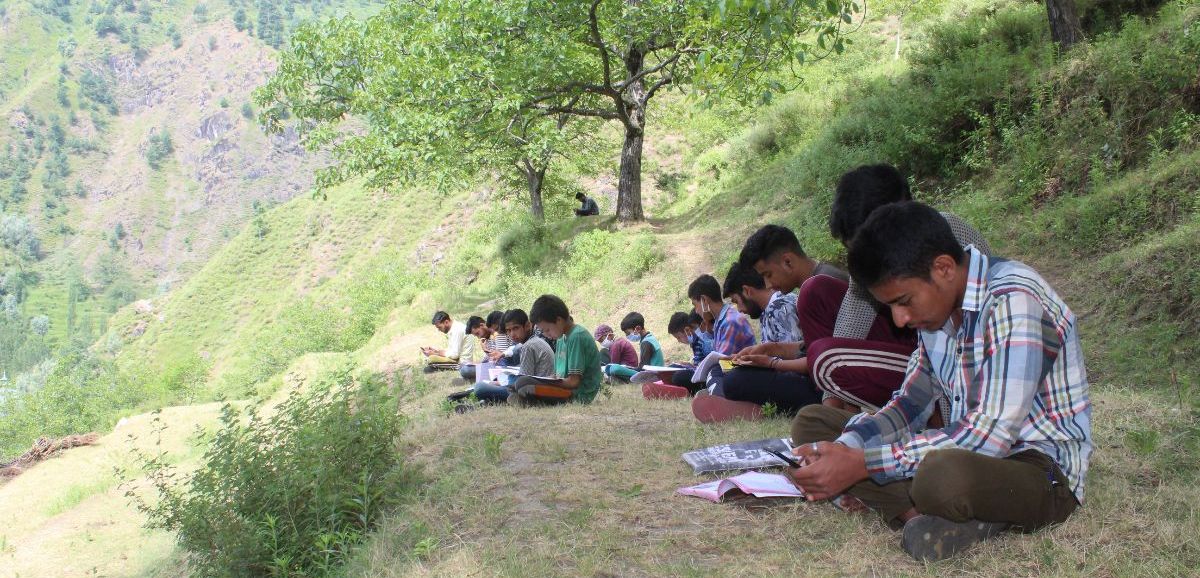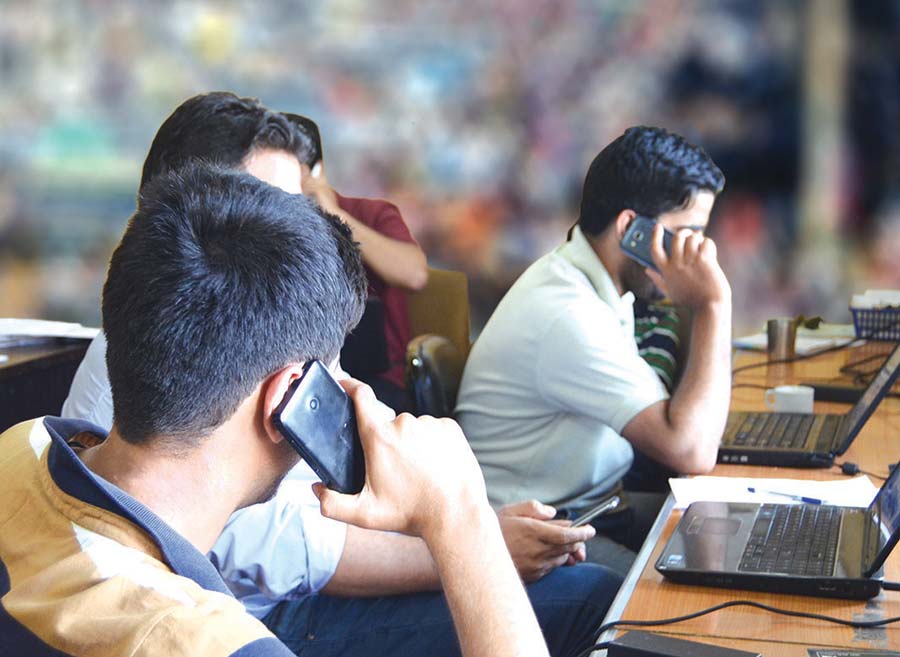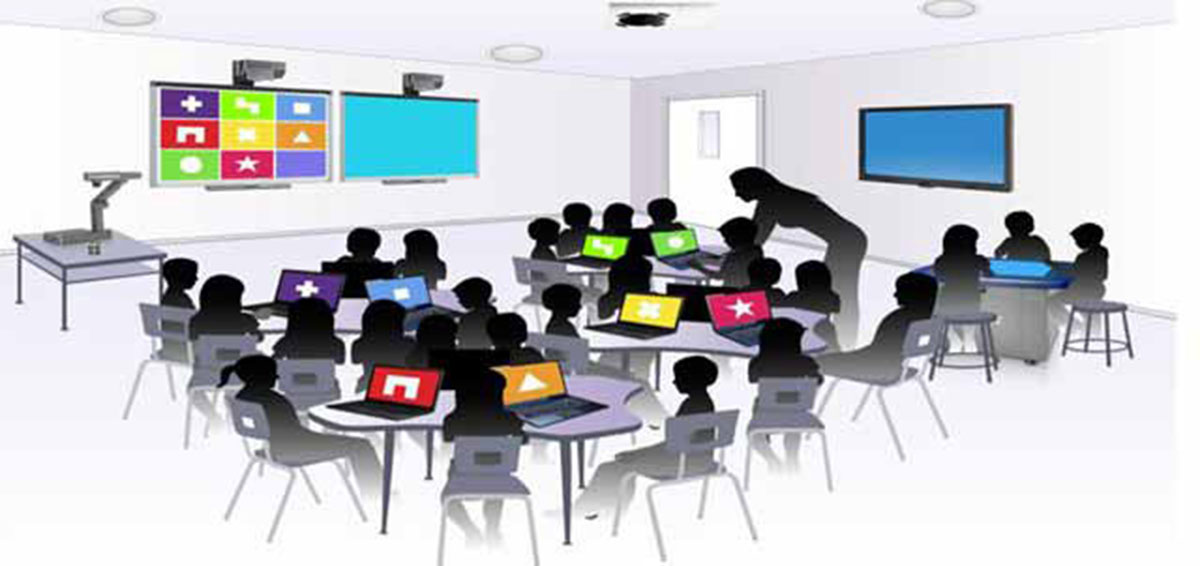by Rayees Masroor
Three-fourths of students in India did not have access to the internet at home, according to the NSO survey. The share of those who did not have computers, laptops, palm-tops and tablets was much greater at 89 per cent.

The deadly second wave of the Coronavirus and the prolonged lockdown has resulted in the closure of the school, college and universities, which has sowed the seed of anxiety and uncertainty among the students, guardians, teachers and the authorities.
To keep students education on track seems to be a mammoth task for the stakeholders. The Covid19 pandemic has disrupted the education sector globally. As the number of cases continues to rise, there is no certainty about when and how the normalcy will be restored. This has encouraged some sort of a permanent tilt towards online education.
The Digital Divide
The new National Education Policy (NEP-2020) also talks about digital and online education. As we move forward, online learning and education are going to gain more space but at the same time, we need to be cautious about the key challenges for the online system of education.

One of the big challenges comes from a digital divide, which can have a negative impact on the whole process. National Statistical Office (NSO) survey 2017-18 has highlighted caution against a sudden push towards online education in India. There is always a risk of excluding a significant number of students.
Three-fourths of students in India did not have access to the internet at home, according to the NSO survey. The share of those who did not have computers, laptops, palm-tops and tablets was much greater at 89 per cent. Even at the higher levels, a large proportion of students did not have these facilities available.
In fact, access to the internet and computers is directly related to economic status. Mobile phones can be used to listening online lectures or accessing to the study material but it is not convenient for writing assignments or examinations. The online system of education or e-learning also poses a challenge in terms of adaptability as both the students and the teachers are not used to this platform, even the parents and the authorities were not prepared to make a shift towards online learning.
Tech Deficit
Imparting education through online and digital platforms also needs sound technical skills and sophisticated gadgets, which often becomes a hurdle on the way. Computer knowledge and time management is also an issue because a good number of teachers still lack computer knowledge, which limits their ability to impart online education.
Time management, concentration and self-motivation is not easy thing when you are used to physical classroom transactions and developed interests, habits and hobbies in that system.

Without foreseeing the prospects of online education teachers have not been trained for the same. Besides, it is not necessary that a good classroom teacher will be a good teacher in the online classroom. There are a limited number of resources available to conduct an online examination in India. Many subjects and courses such as science and performing arts cannot be taught in the digital education space. E-learning or an online system of education is more of a type of screen-based learning system, which restricts the students to perform practicals.
The New Policy
Despite all these challenges the National Education Policy (NEP) 2020 has stressed the growing need for online education in India. Since the whole world is going through a pandemic and the subsequent lockdown, it has become imperative that we have some alternative mode of education and this is where online education has come into the picture.
Adjusting to an online learning model could be a challenge at first, but once you adapt to the format, there are numerous benefits to be realized.
Regardless of the reason you choose to pursue online education, learning through online mode can better prepare you for career advancement in a globalized workforce. The NEP-2020 is designed to maximise the benefits of digital and online education in India while mitigating the downsides.

The new education policy has come with some initiatives comprising pilot studies and the installation of virtual labs to reshape the system of education in India. Some of the key initiatives listed by the policy include the development of well designed and structured online Teaching Tools and Methods, Teachers training, digital infrastructure, virtual labs, teleclasses courses and availability of study material in various regional languages. It also emphasizes the online assessment and examination and development of a digital repository, content creation and dissemination.
The New Normal
Looking at the future regardless of the challenges on its way Online Education seems to be the New Normal. It may not be possible or even feasible to make a wholesale shift towards digital platforms or e-learning but it comes up with many advantages to the students and the educators. It offers teachers an efficient way to deliver lessons to the students through many tools such as videos, PDFs and podcasts etc.
By extending the lesson plan beyond traditional textbooks to include online resources, teachers can become more efficient educators. It allows students to attend classes from any location of their choice. The educational institutions can reach out to a more extensive network of students, instead of being restricted by geographical boundaries. The videos or the lectures can be recorded, archived, and shared for future reference.


This allows students to access the learning material at any convenient time. Online education is far more affordable as compared to physical learning. This is because online learning eliminates the cost points of student transportation, student meals etc. There is hardly any need of printing, which makes it more convenient and creates a paperless environment.
It provides scope for a variety of teaching and learning styles with a wide range of options and resources. There is a possibility of improved attendance of students because a location of choice is available to the learners. It offers self-paced learning and more flexibility. Looking forward online education and learning seems to have great potential to prepare the coming generations for a globalized workforce.
(Author is a teacher and columnist. The opinions expressed in this article are those of the author’s and do not purport to reflect the opinions or views of Kashmir Life.)















